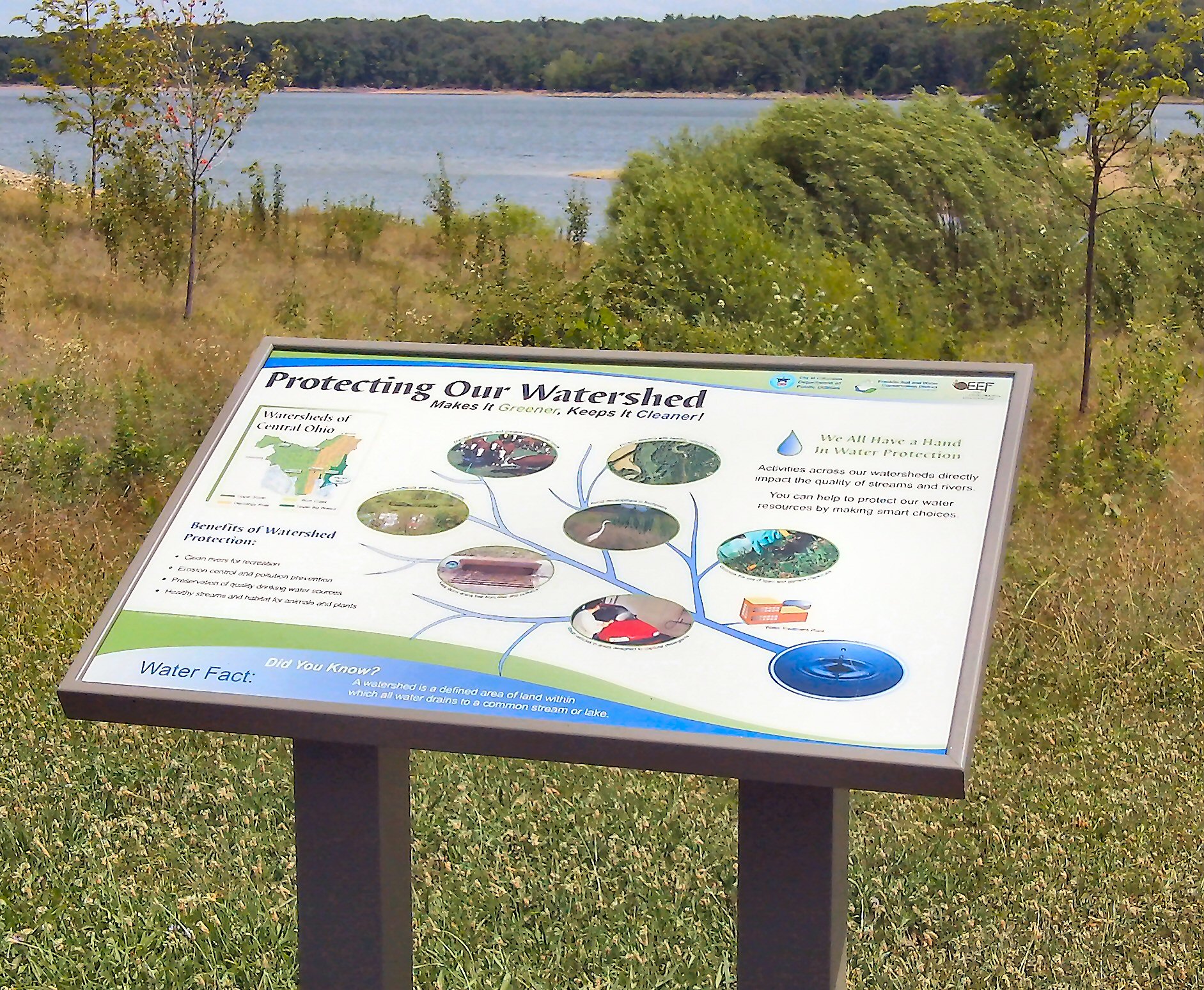Take a Tour

Signage installed at Griggs, O'Shaughnessy & Hoover Reservoirs invites park visitors to take a self-guided tour along the shoreline & learn about the green infrastructure installed there.
Rain gardens, porous pavement & more can improve the quality of storm water entering the reservoirs that supply our drinking water.
Non-point Source Pollution
News Release
News Date: July 06, 2015
State Budget Removes Drinking Water Protections Around City Reservoirs
Columbus Department of Public Utilities Reacts to State Budget Amendment that Removes City’s Ability to Protect Drinking Water Supplies Around City Reservoirs
In response to an amendment to the state's two year state budget bill, Am. HB 64, Division of Water Administrator Rick Westerfield, P.E., PhD, issued the following statement:
"We are obviously disappointed, and view this amendment as trespassing. The city purchased property around the reservoirs many years ago as buffers to filter pollutants to protect the water quality for our 1.1 million drinking water customers,” Westerfield said. “We already offer some limited access to adjacent property owners, including allowing invasive species removal and some view corridors. However, this is not their property, and the city has an obligation to manage this public property in the public’s best interest.”
The Department of Public Utilities has asked the City Attorney’s Office to review all legal options against the amendment, which does not take effect for 90 days. A similar amendment appeared in the budget two years ago, but Governor Kasich vetoed that attempt. Since then, water quality challenges in the state of Ohio have increased, with Columbus recently having a two-week nitrate advisory, a taste and odor issue caused by an algal bloom in late 2013, and Toledo had to issue a do not consume advisory last summer due to toxic algae. Vegetated buffer strips are commonly used by water agencies as a best management practice to not only filter pollutants and excess nutrients carried in overland stormwater, but to also prevent land erosion through deep rooted trees and plants.
“Our concern is that there is nothing in this amendment to prohibit those who do not own these important riparian corridors from removing trees - purchased with public money - and otherwise clearing city-owned land for their own personal benefit,” Westerfield added.
Other organizations in addition to Columbus Public Utilities that expressed concern about the amendment included the Ohio Sierra Club, Ohio Environmental Council, Friends of the Scioto River, and Friends of the Lower Olentangy Watershed.